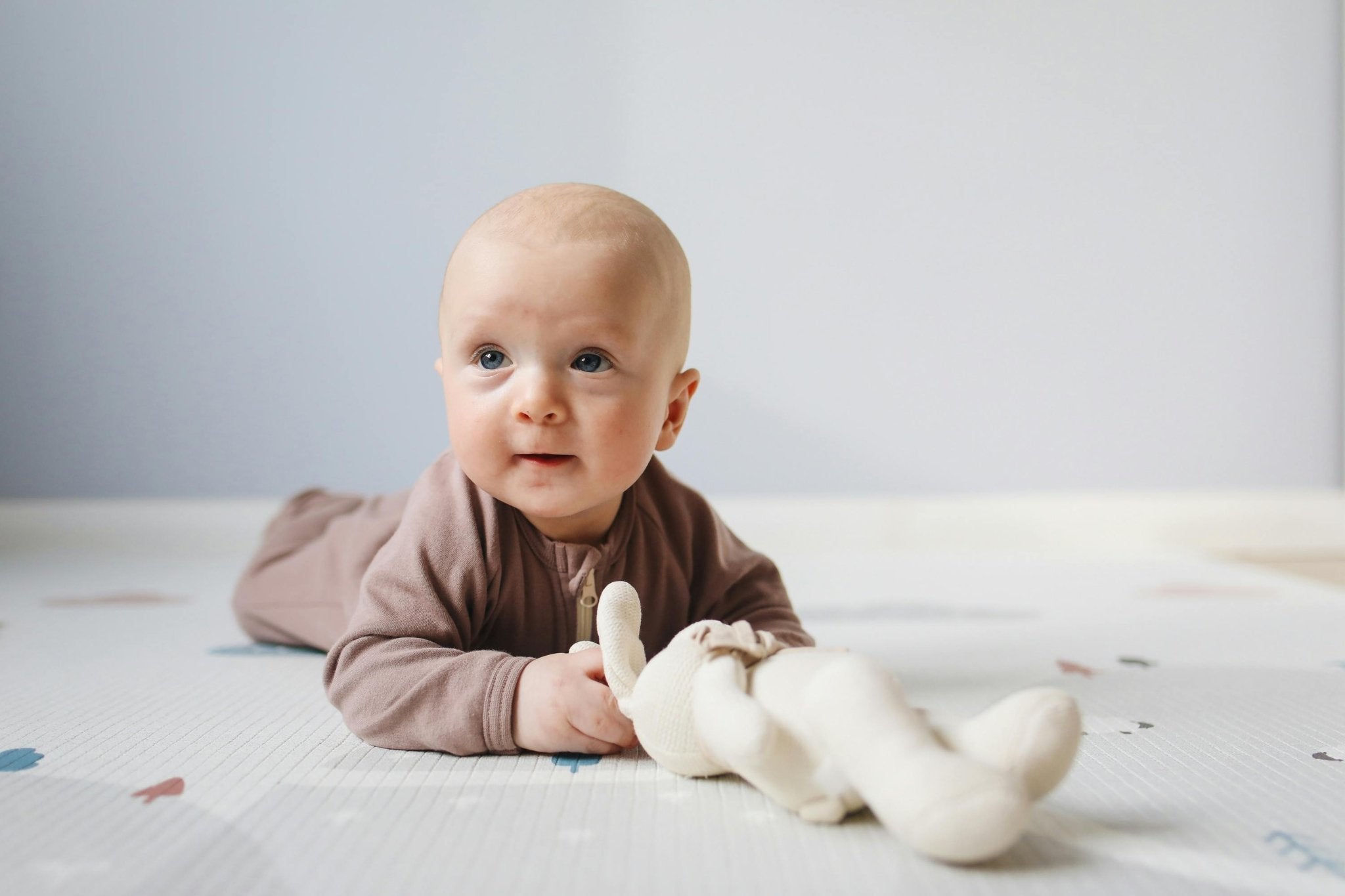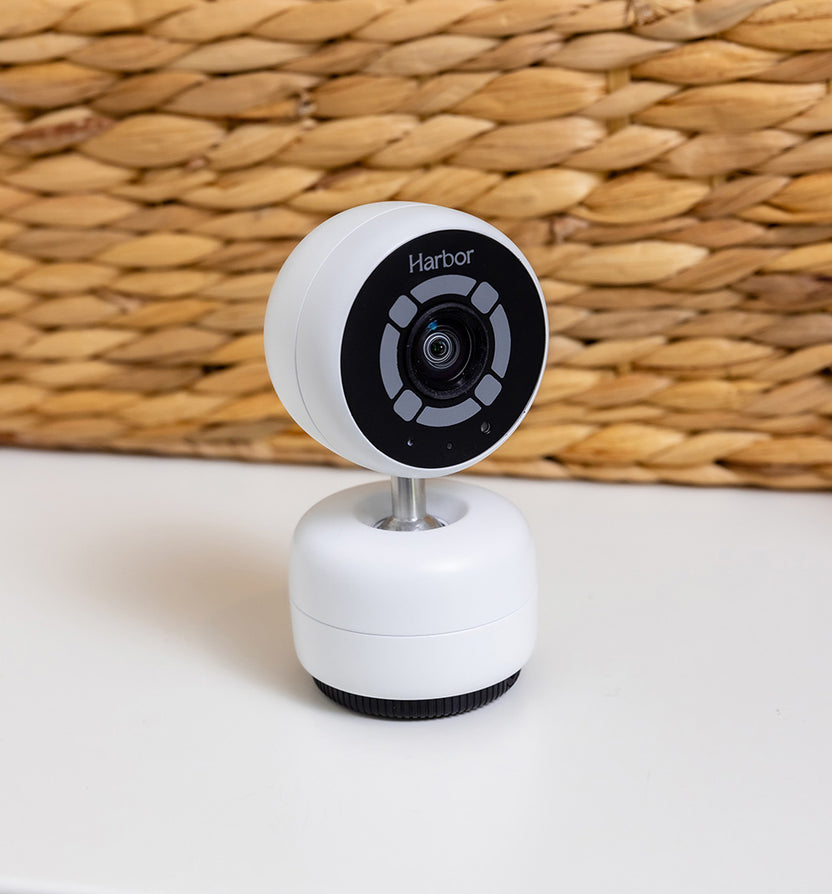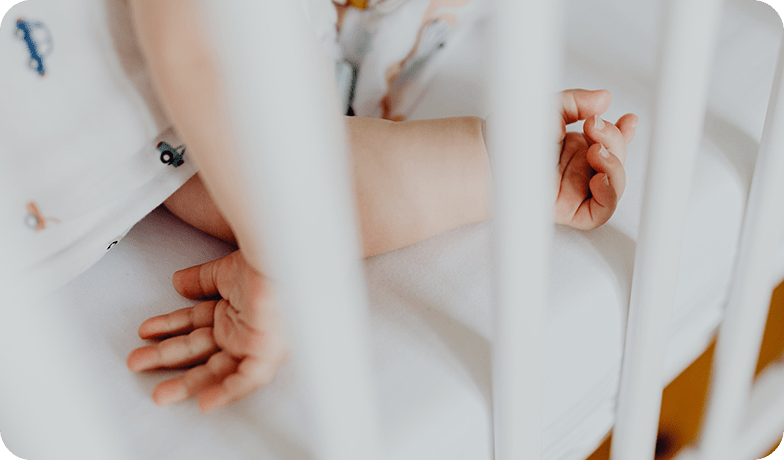
Written By: Angela McPhillips, DNP, RN
One of the most magical parts of early parenthood is watching your tiny newborn grow before your eyes. Those rough and sleepy first weeks are behind you and suddenly baby is more alert, responsive, and curious about the world. By three months, baby is no longer a newborn—they’re waking up to the world around them!
This period is an exciting time of discovery, not only for your little one but for you as a parent. Understanding what milestones to expect for this age helps you celebrate baby’s progress, provide the right kind of support, and identify potential concerns early.
In this guide, we’ll walk you through the major developmental milestones to look for at three months along with practical tips to encourage baby’s growth in a safe and nurturing way. Let’s explore how you can make the most of this incredible stage!
What’s typical at three months?
Each baby grows and learns at their own pace, but by three months old, you might notice your little one hitting exciting developmental milestones. Remember, these are guidelines, not a checklist for perfection. If you have any concerns, consult with your pediatrician!
Let’s break down the key milestones for three-month-olds by category:
Physical milestones at three months
By three months, baby is becoming stronger and more active! Here’s what to look for:
-
Head control: Between three and four months, most babies can hold their heads up steadily when placed on their tummy or while supported in a seated position.
-
Tummy time progress: Baby may start pushing up onto their forearms during tummy time, building their neck and shoulder muscles.
-
Arm and leg movements: Expect plenty of kicks and swipes at toys—baby is learning how their body works!
-
Grasping: At this stage, babies may open their hands more frequently and begin grasping objects.
Social and emotional milestones at three months
As baby becomes more aware of the world and people around them, their social interactions will blossom.
-
First smiles: Baby’s gummy grins are more intentional now, often sparked by your face and voice!
-
Responding to attention: Your little one might seem delighted when you talk, sing, or smile at them. These are early signs of bonding and attachment.
-
Recognizing familiar faces: Baby may begin to focus on faces they see regularly, building a sense of security.
Cognitive milestones at three months
Baby’s brain is growing rapidly and they’ll start to explore cause and effect.
-
Tracking objects: They can follow a moving object or your face with their eyes. Visual tracking is a big developmental step!
-
Curiosity about toys: Baby might swat at toys dangling in front of them, showing curiosity about how things move.
-
Hand-to-mouth coordination: Putting their hands to their mouth helps babies explore textures and self-soothe.
Language and communication milestones at three months
Baby is laying the foundation for language through coos and other adorable sounds.
-
Cooing and gurgling: Expect to hear coos and vowel-like sounds as baby experiments with their vocal cords.
-
Responding to your voice: Baby might turn their head toward your voice or smile when you talk.
-
Imitating sounds: Around this age, babies start trying to mimic the rhythm and tone of your speech, even if it’s just babbling.
How you can support baby’s development
At three months old, baby is a sponge that absorbs everything around them. The best way to support their growth is through fun, simple activities that encourage their natural curiosity and by responding to their cues.
Here are some practical tips and playtime ideas to nurture their physical, social, cognitive, and language development—all while keeping things low-pressure and enjoyable for both of you.
Encouraging physical development at three months
-
Make tummy time fun: Tummy time strengthens baby’s neck, shoulders, and upper body. Try placing a colorful toy or a mirror at eye level to encourage them to lift their head and look around. Keep sessions short (a few minutes at a time is plenty!) and gradually extend them as baby gets stronger.
-
Engage in gentle stretching: Gently move baby’s arms and legs in a bicycling motion during playtime. This supports flexibility and coordination.
-
Reaching and kicking: Baby’s jerky arm and leg movements are developing into more coordinated reaches and kicks. Use a baby play mat that has suspended toys over their head (or hold them yourself) to support this discovery.
-
Incorporate side-lying play: Place baby on their side with a rolled-up towel behind them as a bolster. Some babies may be ready to roll earlier than others—if that’s the case for your little one, use this position to encourage the motions of rolling back and forth.
Fostering social and emotional development at three months
-
Respond to their coos: When baby coos or makes a sound, respond enthusiastically. Back-and-forth interactions help them learn about communication and connection.
-
Create comforting routines: Simple routines like singing a lullaby before bedtime or talking to them during diaper changes help baby feel secure and loved.
-
Encourage face-to-face time: Spend time making eye contact, smiling, and talking to baby. These interactions build trust and a strong emotional bond!
Boosting cognitive development at three months
-
Introduce sensory toys: Offer toys with different textures, colors, and sounds to engage baby’s senses. Soft rattles, crinkly cloth books, and plush toys are great options.
-
Play peek-a-boo: Hide behind your hands or a cloth, then pop back into view. This simple game teaches baby about object permanence and keeps them entertained.
-
Try cause-and-effect play: Show baby how tapping a toy or shaking a rattle creates noise. Encourage them to try it themselves as they develop better coordination.
Supporting language development at three months
-
Talk all day: Narrate your day to your baby. For example, “Now we’re putting on your socks. Look at those tiny toes!” Hearing your voice helps them learn language patterns.
-
Sing and make music: Singing songs like “Twinkle, Twinkle, Little Star” or even your favorite tunes introduces rhythm and language in a fun way.
-
Read together: Share picture books or even simple magazines. Baby will love hearing your voice and looking at colorful images!
Remember to keep it fun
There’s no need to pressure yourself or your child to meet every milestone right on time. Every smile, coo, and tummy time session is a step in the right direction.
Celebrate the little victories and enjoy this special time together—you’re helping baby grow in ways you can’t always see!
Delayed milestones: When to call your pediatrician
It’s normal to wonder if baby is reaching their milestones on time. While every child develops at their own pace, you should discuss concerns about their development with your pediatrician.
Identifying any red flags or warning signs early allows for timely support and interventions, which can make a big difference in baby’s development.
What to watch for at three months
Here are some behaviors that may warrant a conversation with your pediatrician:
-
Not responding to loud sounds or familiar voices
-
Difficulty focusing their eyes or tracking moving objects
-
Struggling to lift their head during tummy time or when supported
-
Not smiling or lacking interest in interacting with others
-
Appearing overly stiff, floppy, or keeping fists clenched most of the time
Head control is a key skill for three-month-olds, laying the foundation for future milestones like sitting and rolling. If baby struggles to lift their head during tummy time or does not show attempts to reach or grasp, it could be an early sign of potential delays in motor development. Similarly, a lack of social engagement, like not smiling or reacting to sounds, may indicate the need for further evaluation.
Why addressing concerns early matters
If you’re concerned about your kiddo’s development, trust your instincts. Share your observations with your pediatrician and ask about developmental screenings. Early support, whether it’s extra tummy time, targeted exercises, or specialized therapies, can help baby build critical skills and catch up if needed.
Reassurance for parents
Developmental milestones are meant to guide and inform, not stress or overwhelm. A missed milestone doesn’t always mean there’s a problem, but being proactive ensures that baby gets the support they need.
Remember, you know your baby best—if something feels off, trust your instincts and have a conversation with your pediatrician!

- Start tummy time early and safely: Tummy time doesn’t have to always be on the floor! During early infancy, tummy time on your chest while you recline is the best way to introduce this essential activity, since it places baby at a natural incline. Use short, frequent sessions throughout the day to help baby build neck, shoulder, and upper body strength, all of which are essential for upcoming milestones like rolling, sitting, and eating solids.
- Respond to baby as play: When baby coos, babbles, or cries, responding with eye contact and gentle speech is your most powerful form of play as a parent. This back-and-forth communication, called “serve and return,” fosters a strong caregiver attachment, supports brain development, and helps build baby’s social-emotional awareness.
- Safety tip: Once baby shows signs of rolling, you’ll want to stop swaddling them to keep them safe. Download our free Safe Sleep Guide here!
Celebrate the journey
Every coo, every smile, and every tiny milestone is a reminder of the amazing progress your little one is making—and it’s all thanks to your love and dedication. These early months come with a massive learning curve for you and your little one.
Curious about what comes next? By six months, baby will be even more curious and active, ready to explore the world in exciting new ways.
Bookmark this series and come back to it as baby reaches new milestones. You can also share it with fellow parents as a great way to support and celebrate each other on this beautiful journey!
Appendix: Go-to resources to help you monitor, track, and support baby’s development
-
American Academy of Pediatrics Ages & Stages
-
Nemours KidsHealth Growth & Development
-
Pathways.org for resources, including games and videos, developed with and approved by pediatric physical and occupational therapists and speech-language pathologists
-
Harvard University’s Center on the Developing Child for a deep dive into the science behind child development




